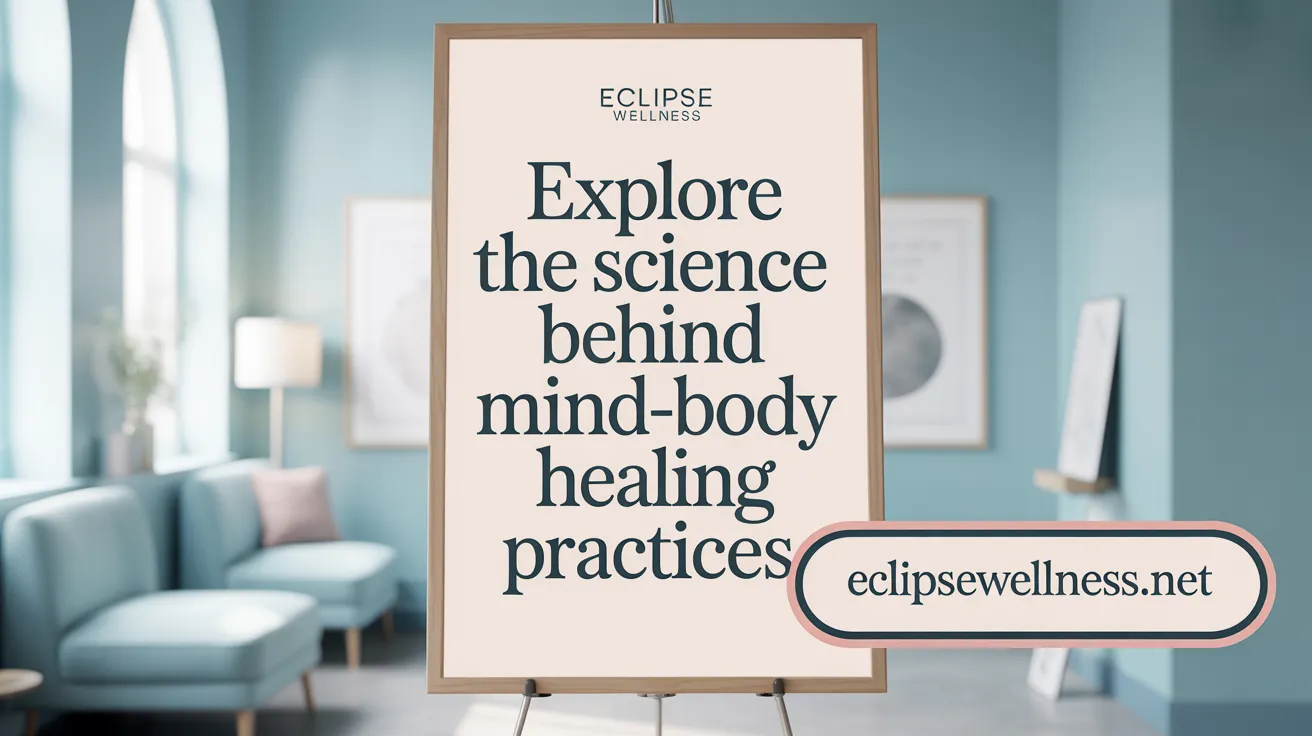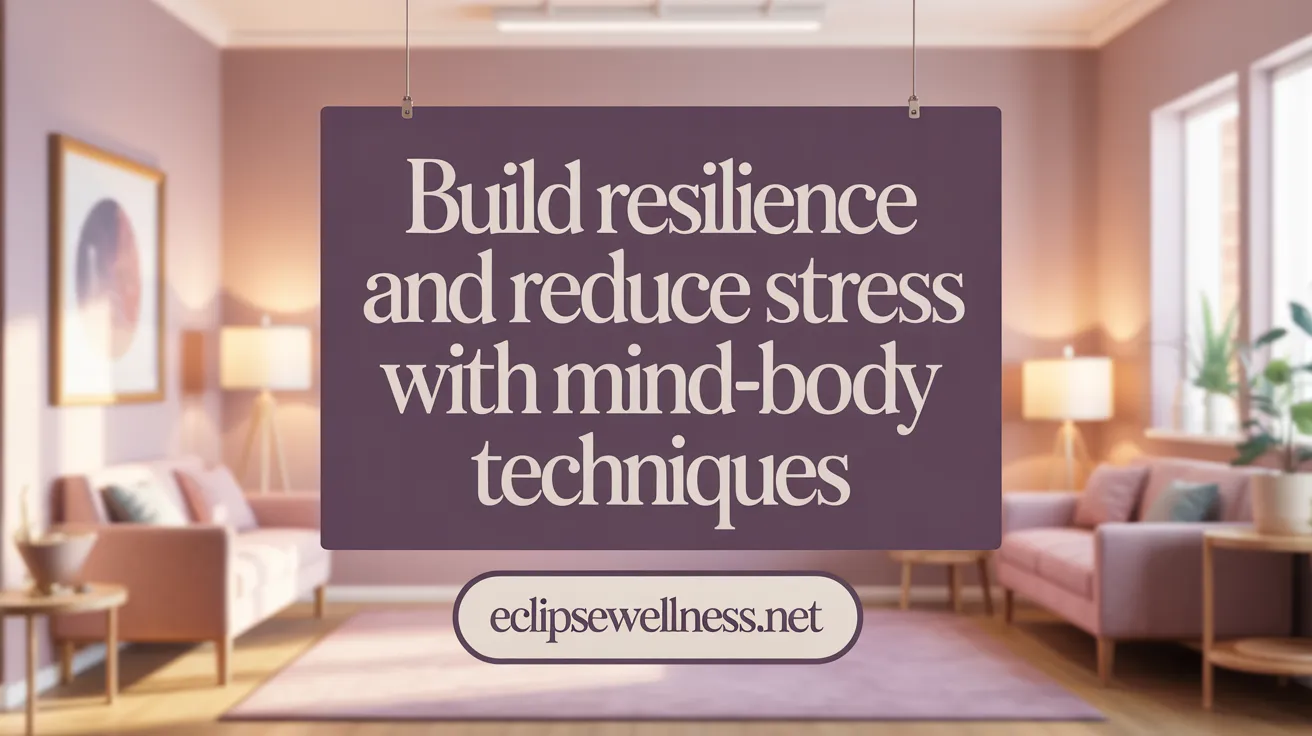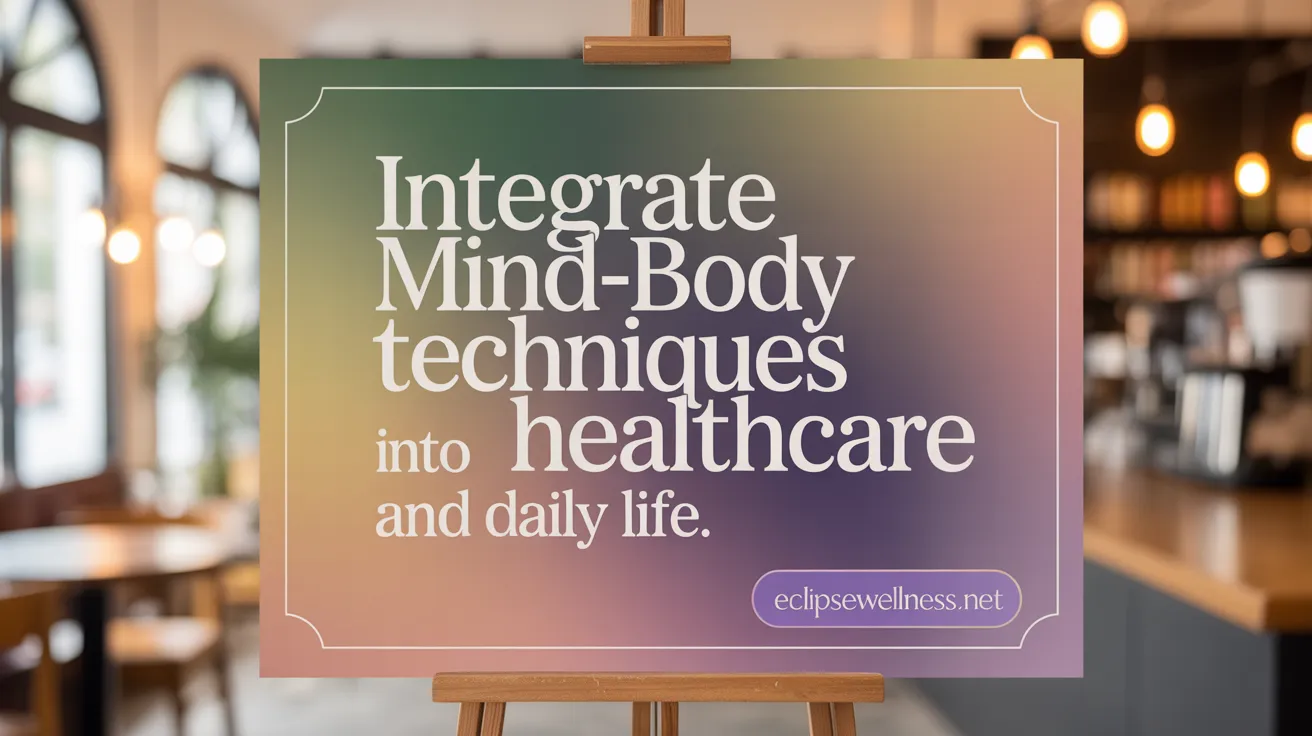Exploring the Synergy of Mind and Body in Healing
In recent years, the integration of mind-body techniques into health and wellness practices has garnered increasing attention from both the scientific community and healthcare providers. These approaches, rooted in ancient traditions and now supported by modern research, emphasize the profound connection between mental states and physical health. From meditation and yoga to somatic therapies and acupuncture, mind-body practices offer promising avenues for supporting physical recovery and emotional resilience. This article delves into how these techniques work, their benefits, scientific underpinnings, and practical methods to strengthen the mind-body connection for improved healing outcomes.
Understanding Mind-Body Techniques: Foundations and Healing Potential
What are mind-body techniques and how do they support physical and emotional healing?
Mind-body techniques are therapeutic methods that emphasize the connection between mental and physical states to promote health and healing. These practices encompass a broad range of activities including meditation, yoga, tai chi, guided imagery, biofeedback, hypnosis, and expressive arts therapies. They are often instructed by trained practitioners and tailored to individual needs.
These techniques work by fostering relaxation, reducing stress, alleviating pain, and enhancing mood, sleep, and overall wellness. Scientific studies employing brain imaging and physiological monitoring demonstrate that regular practice can lower blood pressure, improve balance, and reduce symptoms related to anxiety, depression, and chronic pain. For example, meditation can help center the mind and decrease cortisol levels, while yoga and tai chi improve flexibility and stability.
When integrated into healthcare routines, especially as adjuncts to conventional treatments, mind-body practices serve as safe, effective tools for symptom management and emotional support. They help individuals develop better coping skills, support their immune response, and enhance their quality of life, especially in managing chronic conditions like arthritis, cancer, and mental health disorders.
The Mind-Body Connection: Linking Mental and Physical Health

What is the connection between mental and physical health, and how can understanding this link benefit individuals?
The relationship between mental and physical health is profound and bidirectional. Scientific research confirms that emotional states, thoughts, and sensations can influence bodily functions through mechanisms involving the nervous system, hormones, and immune responses.
When a person experiences stress, anxiety, or depression, their body's stress response activates, releasing hormones like cortisol and adrenaline. Chronic activation of this response can lead to high blood pressure, weakened immune function, sleep disturbances, and digestive issues.
Conversely, physical health conditions such as diabetes, heart disease, or chronic pain can impact mental health by contributing to feelings of frustration, anxiety, or depression. This dynamic creates a feedback loop where mental and physical health issues exacerbate each other.
Understanding this interconnectedness benefits individuals by fostering a holistic approach to healthcare. Techniques like meditation, yoga, acupuncture, and somatic therapies aim to strengthen the mind-body bond, promoting relaxation, reducing stress, and supporting healing.
Moreover, recognizing the link allows healthcare providers to implement integrated interventions, combining mental health support with physical treatments. This comprehensive approach not only improves clinical outcomes but also enhances overall well-being and life satisfaction.
Studies in fields like psychoneuroimmunology show that positive emotional experiences can boost immune responses, while negative emotions may weaken resistance to illness. This underscores the importance of emotional regulation and mental health in maintaining physical health.
By embracing the mind-body perspective, individuals are empowered to utilize practices that promote mental clarity and emotional resilience, which in turn can lead to better management of chronic illnesses and healthier lifestyles.
In summary, understanding and leveraging the connection between mind and body fosters a more effective, proactive approach to health. It encourages preventive care and early intervention, aiming for a balanced state where both mental and physical health are optimized for a higher quality of life.
Key Benefits and Guiding Principles of Mind-Body Practices
What are the key benefits and principles of mind-body practices for holistic well-being?
Mind-body practices are a collection of techniques that foster the interaction between mental and physical health, supporting overall well-being. These approaches include meditation, yoga, tai chi, acupuncture, massage therapy, and guided imagery, all aimed at activating the body's natural relaxation response.
The foremost benefits of these practices are their ability to reduce stress, anxiety, and depression. They help individuals manage chronic pain conditions such as low-back pain, osteoarthritis, and migraines. Additionally, they enhance immune system function, improve sleep quality, and promote emotional regulation by modulating brain activity and hormonal responses.
Practices like yoga and Tai Chi incorporate controlled movements and breathing exercises that promote flexibility, balance, and vitality. Meditation and mindfulness techniques cultivate self-awareness and emotional resilience. Acupuncture and massage work by balancing energy flow and relieving tension, thus supporting physical health.
These practices share core principles including awareness, mindfulness, and self-regulation. They emphasize paying attention to bodily sensations, thoughts, and emotions non-judgmentally, which helps reprogram stress responses and fosters resilience.
Trained professionals such as yoga instructors, acupuncturists, and mindfulness teachers guide individuals through safe and effective techniques. Their expertise ensures that practices are tailored to personal needs and health conditions, minimizing risks and maximizing benefits.
Integrating these approaches within a biopsychosocial framework promotes a balanced, holistic view of health. By strengthening the mind-body link, individuals can better cope with life's stresses, support healing processes, and achieve optimal physical and emotional functioning.
Scientific Foundations: How Mind-Body Techniques Influence Healing
 Numerous scientific studies have explored how mind-body practices support healing and overall health. These techniques, including meditation, yoga, acupuncture, and guided imagery, affect various neurobiological and physiological processes.
Numerous scientific studies have explored how mind-body practices support healing and overall health. These techniques, including meditation, yoga, acupuncture, and guided imagery, affect various neurobiological and physiological processes.
Research shows that these practices induce structural and functional changes in brain networks responsible for emotion regulation, attention, and self-awareness. Neuroimaging studies have demonstrated increased activity in areas such as the prefrontal cortex and the anterior cingulate cortex, which are involved in managing emotional responses and cognitive control.
One of the primary mechanisms involves modulating the nervous system, particularly activating the parasympathetic branch. This promotes relaxation, reduces stress hormones like cortisol, and enhances immune function. For example, practices like meditation and yoga can decrease cortisol levels, contributing to lower inflammation and better immune responsiveness.
Additionally, these therapies influence neuromodulatory systems such as serotonin, dopamine, and endocannabinoids. These signaling molecules help regulate mood, pain, and stress responses. Evidence suggests that consistent practice can strengthen these systems, promoting resilience and healing.
Clinical trials and meta-analyses support the effectiveness of mind-body approaches in reducing symptoms of anxiety, depression, and chronic pain. Some research also indicates improved cardiovascular health and immune markers, highlighting their systemic impact.
The physiological benefits are further supported by increased production of nitric oxide, which improves blood flow and tissue repair. Techniques like tai chi and qigong promote balance and circulation, aiding recovery and vitality.
Despite these promising findings, limitations exist. Many studies vary in quality and sample size, and more high-quality research is needed to affirm causality and determine optimal practices. Ongoing investigations aim to better understand the complex neurobiological pathways involved, ensuring these therapies are integrated effectively into mainstream healthcare.
In summary, scientific evidence underscores that mind-body practices engage the brain and body in interconnected ways, modulating neural activity, hormonal levels, and immune responses. These mechanisms help explain their widespread benefits in managing health conditions and enhancing overall well-being.
Common Mind-Body Practices: Methods and Applications
What are some common mind-body techniques, such as meditation, yoga, and somatic therapies, and how are they practiced?
Popular mind-body approaches encompass a variety of techniques that focus on fostering awareness of one’s physical sensations and mental states. Meditation is a foundational practice involving focused attention, breathing exercises, and mindfulness techniques like guided imagery or mantra recitation. These practices help achieve deep relaxation, mental clarity, and emotional resilience.
Yoga integrates physical postures, breath control, and mental concentration to promote flexibility, strength, and inner calmness. It often includes practices like Hatha yoga, Vinyasa, and restorative yoga, each emphasizing posture alignment, breathing, and meditation.
Somatic therapies, such as Somatic Experiencing, the Alexander Technique, or sensorimotor approaches, prioritize reconnecting with bodily sensations to address tension, trauma, and emotional disruptions. These practices often involve body scans, grounding exercises, conscious movement, and mindful attention to physical feelings.
All these techniques aim to harmonize the interactions between mind and body. They support stress reduction, emotional regulation, and physical healing by encouraging awareness, intentional movement, and relaxation.
Yoga's role in integrating physical and mental practices
Originating in India, yoga combines postures (asanas), breathwork (pranayama), and meditation to foster holistic health. It trains the body, relaxes the mind, and enhances overall well-being.
Somatic therapies focused on bodily awareness and trauma release
These therapies help individuals recognize stored tension and trauma within the body. Through gentle movements, breath, and awareness techniques, they promote emotional resilience and physical relaxation.
Additional practices like tai chi, qigong, acupuncture, and massage therapy
Tai chi is a Chinese martial art involving slow, controlled movements and deep breathing, which improves balance, flexibility, and manages stress.
Qigong, an ancient Chinese practice, combines gentle movement, breath control, and mental focus to enhance health, vitality, and stress relief.
Acupuncture balances the body's energy flow—Qi—by inserting fine needles into specific points, alleviating pain, reducing stress, and supporting holistic health.
Massage therapy manipulates soft tissues to reduce muscle tension, promote relaxation, and improve circulation.
Together, these practices exemplify an integrative approach to nurturing the mind-body connection, promoting physical health, emotional stability, and overall well-being.
| Practice | Methodology | Benefits | Additional Details |
|---|---|---|---|
| Meditation | Focused attention, breathing, guided imagery | Stress reduction, clarity, calmness | Includes techniques like MBSR and Transcendental Meditation |
| Yoga | Postures, breathwork, meditation | Flexibility, strength, mental balance | Various styles addressing physical and emotional health |
| Somatic Therapies | Body scans, movement, grounding exercises | Trauma release, relaxation | Emphasize bodily awareness to manage emotional distress |
| Tai Chi | Slow, flowing movements, deep breathing | Balance, stress relief, vitality | Often called 'moving meditation' |
| Qigong | Gentle movements, meditation, breath control | Health improvement, antiaging | Focuses on energy cultivation |
| Acupuncture | Fine needle insertion at specific points | Pain relief, energy flow balance | Uses traditional Chinese medicine principles |
| Massage Therapy | Soft tissue manipulation | Relaxation, pain relief | Enhances circulation, reduces muscle tension |
Exploring these practices highlights their versatility and ability to enhance mental, physical, and emotional health through accessible, often low-cost interventions supportive of holistic healing.
Stress Reduction and Building Emotional Resilience Through Mind-Body Approaches

How can mind-body practices reduce stress and promote emotional resilience?
Mind-body practices such as meditation, yoga, and mindfulness activate the body's relaxation response, which helps counteract the stress response driven by hormones like cortisol. When these techniques are regularly practiced, they promote a state of deep rest, leading to decreased tension and a calmer mind.
By fostering greater self-awareness and emotional regulation, these practices enable individuals to recognize their feelings and manage them more effectively. This heightened awareness helps in identifying stress triggers early, allowing for healthier responses rather than reactions driven by anxiety or frustration.
Developing a consistent routine of mindfulness exercises and relaxation techniques creates a foundation for emotional resilience. Such routines strengthen coping abilities, improve mental clarity, and cultivate a positive outlook even in challenging situations. Over time, this regular engagement helps build mental toughness and reduces vulnerability to emotional overwhelm.
In addition, supporting activities like physical exercise, engaging in hobbies, and maintaining strong social connections further contributes to resilience. These activities boost overall well-being and provide additional buffers against stress.
Practicing these mind-body approaches consistently leads to more stable emotional health, better stress management, and an overall sense of balance. Incorporating movement, breathwork, and mindfulness into daily life can significantly improve quality of life and resilience against future stressors.
Strengthening the Mind-Body Connection for Enhanced Healing
What methods can be used to strengthen the mind-body connection for improved healing outcomes?
Enhancing the bond between mind and body is a vital aspect of promoting overall health and accelerating healing. Techniques such as breathwork, visualization, and progressive muscle relaxation serve as foundational practices to cultivate this connection.
Deep breathing exercises, including diaphragmatic and alternate nostril breathing, activate the parasympathetic nervous system, fostering relaxation and emotional regulation. Visualization or guided imagery involves creating mental images of health and recovery, which can stimulate physical healing processes and promote positive mental states.
Movement-based practices like yoga, tai chi, and qigong integrate physical activity with mindful awareness. These practices improve flexibility, balance, and body awareness while reducing stress. Yoga combines postures with breathing and meditation, nurturing a harmonious mind-body state. Tai chi and qigong utilize slow, controlled movements and breath control to enhance vitality and relaxation.
Somatic therapy methods emphasize awareness of bodily sensations to facilitate emotional expression and nervous system regulation. Techniques like body scanning, mindful movement, and Tension Release Exercises (TRE) help unearth and release stored trauma or tension, leading to emotional resilience and physical harmony.
Consistent engagement in these practices supports a bidirectional relationship between mental and physical health. Cultivating body awareness and self-compassion through mindful attention and respectful movement fosters emotional resilience, reduces stress hormones like cortisol, and bolsters the body's intrinsic healing capacity.
In summary, combining breathwork, visualization, gentle movement exercises, and somatic therapies creates a comprehensive approach to strengthening the mind-body connection. This integrated method not only alleviates stress and emotional distress but also enhances physical recovery and overall well-being.
Integrating Mind-Body Techniques into Clinical and Everyday Settings

Applications in managing chronic pain, cancer symptoms, and mental health conditions
Mind-body practices like yoga, acupuncture, and meditation are increasingly used to support health in various settings. For individuals with chronic pain, therapies such as acupuncture and tai chi can ease discomfort, boost balance, and reduce stiffness. Patients undergoing cancer treatments often find relief from symptoms like fatigue, nausea, and anxiety through these practices.
Mental health conditions, including anxiety, depression, and PTSD, also see improvement with techniques like mindfulness and guided imagery. These interventions help regulate emotions, promote relaxation, and enhance overall well-being, complementing traditional medical treatments.
Role of healthcare professionals and interdisciplinary teams
Healthcare providers are encouraged to incorporate these practices thoughtfully into patient care. This involves working with interdisciplinary teams, including mental health professionals, physical therapists, and acupuncturists, to tailor approaches suited to individual needs. Proper training ensures practitioners can deliver these interventions safely and effectively.
Clinicians often recommend mind-body techniques as part of a holistic treatment plan, especially for patients managing long-term conditions or seeking to improve their quality of life. Evidence from research supports their role in strengthening immune response, reducing stress hormones, and supporting recovery.
Accessibility and adaptability through virtual platforms and community programs
Digital platforms and community programs have expanded access to mind-body therapies, making them more inclusive. Virtual classes for yoga, guided meditation, and tai chi enable patients to practice safely at home, especially important for those with mobility issues or living in remote areas.
Community-based programs also promote group practice, social support, and education about these techniques. Schools, workplaces, and local health centers are integrating them to foster healthier lifestyles, reduce stress, and improve mental health.
Importance of personalization and patient-centered approaches
Personalization is vital for maximizing benefits. Healthcare providers should evaluate individual preferences, cultural influences, and specific health conditions when recommending practices. Techniques like yoga or meditation can be adapted to suit different ages, fitness levels, and cultural contexts.
Patient-centered approaches emphasize empowerment, encouraging individuals to participate actively in their health journey. Consistent engagement with tailored mind-body practices can enhance adherence, foster self-awareness, and lead to more sustained health improvements.
Emerging Modalities and Complementary Mind-Body Approaches

Neurofeedback and its role in neuroplasticity and mental health
Neurofeedback is an innovative technique that involves monitoring brain wave activity through devices like IASIS Micro Current Neurofeedback. This method helps individuals promote neuroplasticity—the brain’s ability to reorganize itself—and can effectively address issues such as trauma, anxiety, depression, and ADHD. By providing real-time feedback, neurofeedback trains the brain to function more optimally, supporting mental clarity and emotional stability.
Creative therapies such as music, art, and dance/movement
Creative therapies harness the expressive power of arts to facilitate healing. Music therapy reduces anxiety, depression, and pain, especially in surgical or clinical settings. Art therapy offers emotional expression and trauma release, while dance/movement therapy emphasizes body awareness and emotional resilience. These approaches appeal to multiple senses and emotional pathways, fostering holistic recovery and self-awareness.
Traditional practices like acupuncture, aromatherapy, and Reiki
Traditional modalities such as acupuncture, aromatherapy, and Reiki promote relaxation and balance. Acupuncture works by balancing the flow of Qi, alleviating pain and reducing stress. Aromatherapy uses concentrated plant oils to enhance well-being, often calming the nervous system. Reiki, a form of energy healing, supports emotional health and physical relaxation by channeling healing energy through gentle touch.
Evidence supporting these complementary therapies for emotional and physical healing
Research evidences the effectiveness of these modalities in supporting overall health. Neurofeedback has been shown to improve neurobehavioral conditions, while music and art therapies assist in reducing stress and trauma. Acupuncture and aromatherapy have demonstrated benefits in pain reduction, stress relief, and immune strengthening. Collectively, these practices offer safe, cost-effective options that enhance emotional resilience and physical healing, integrating smoothly into conventional healthcare.
| Approach | Benefits | Supporting Evidence | Applications |
|---|---|---|---|
| Neurofeedback | Promotes brain flexibility, enhances mental health | Studies on neuroplasticity and trauma recovery | Anxiety, depression, ADHD |
| Music Therapy | Calms nerves, reduces pain, supports emotional health | Clinical reports in surgical and neurological cases | Surgery, dementia, MS, Parkinson's |
| Art and Dance Therapy | Facilitates emotional expression, body awareness | Traumatic stress reduction, emotional processing studies | Trauma, mental health |
| Acupuncture | Eases pain, balances energy flow | Research on pain management, stress reduction | Chronic pain, cancer symptoms |
| Aromatherapy | Promotes relaxation, reduces anxiety | Clinical trials on stress and mood improvements | Stress, mood disorders |
| Reiki | Energy balancing, emotional and physical support | Anecdotal data; ongoing research | Emotional health, chronic stress |
The integration of these approaches into holistic patient care continues to grow, supported by scientific research demonstrating their benefits for both mind and body, fostering overall well-being.
Embracing Mind-Body Practices for Holistic Well-being
Mind-body techniques represent a powerful and multifaceted approach to health that bridges the gap between mental and physical wellness. Supported by growing scientific evidence, these practices offer effective tools for managing stress, alleviating chronic pain, enhancing emotional resilience, and promoting recovery across diverse populations. By understanding the underlying mechanisms and integrating these interventions into personalized care, individuals and healthcare systems alike can foster greater balance, healing, and overall quality of life. As accessibility improves and new modalities emerge, embracing the synergy of mind and body holds immense promise for advancing holistic well-being in the modern world.
References
- Mind and Body Practices | NCCIH
- Mind-Body Interventions: The Science Behind Meditation ...
- Types of Mind Body Practice
- How to reduce stress and anxiety through movement ...
- Mind-Body Connection Techniques for Holistic Well-Being
- The Promise of Mind-Body Interventions to Address ...
- Integrative Medicine: About Mind-Body Therapies
- What is the mind-body connection? Tips to strengthen it
- 6 Ways Somatic Therapy Bridges Mind and Body for Healing
- Understanding the Mind-Body Connection
